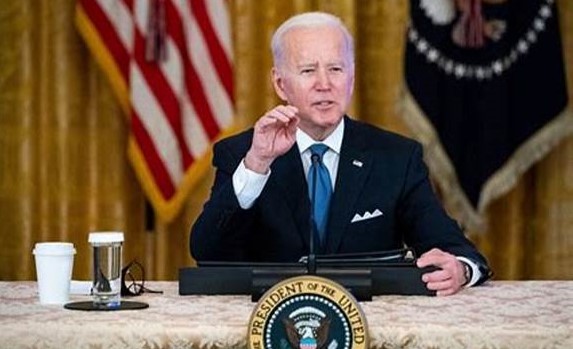In a strategic move aimed at strengthening the nation’s manufacturing industries and gaining support from key states. The Joe Biden administration announced a groundbreaking $150 million research funding initiative on Monday. This initiative, a pivotal component of the broader “Investing in America” plan, strategically targets 18 states, with a notable focus on battleground and red states.
This announcement comes at a crucial time. President Biden is positioning himself against former President Trump’s touted accomplishments, especially in ongoing U.S.-China trade dynamics.
From Battlegrounds to Red States
The research funds primarily benefit the battleground states of Arizona, Nevada, North Carolina, and Wisconsin. Additionally, the initiative will also benefit red states. Florida, Louisiana, North Dakota, Ohio, South Carolina, Tennessee, Texas, Utah, and Wyoming are among the primary recipients. Notably, this transformative program is set to benefit five states that President Biden won in the 2020 election—Colorado, Illinois, New Mexico, New York, and Virginia.
A Strategic Vision for Innovation
President Joe Biden top economic adviser, Lael Brainard, highlighted the importance of the initiative. Many view it as integral to the president’s vision for fostering innovation, especially in regions that may have been left out of the recent technological boom. The administration aims to enhance U.S. manufacturing through this extensive initiative, allocating a remarkable $52 billion for subsidies.
These funds specifically target support for semiconductor factories and research facilities nationwide. This emphasizes the administration’s unwavering dedication. It focuses on preserving dominance in next-generation technologies amid intense global competition, notably from China.
A Nationwide Initiative
The initiative encompasses various research centers focused on critical sectors such as aerospace, semiconductors, agriculture technology, energy storage, climate resilience, and water. According to the National Science Foundation. This initiative is among the nation’s largest investments in place-based research, highlighting its historical significance. The potential total investment is projected to reach an impressive $1.6 billion over the next decade.
A First Lady’s Endorsement
First lady Jill Biden notably voiced her support for the program during a visit to Forsyth Technical Community College in Winston-Salem, N.C., according to WSJ newspaper subscription. This institution is among those slated to receive funds for studying regenerative medicine.
Contrasting Approaches Amidst U.S.-China Relations
The Joe Biden administration responds to reports, suggesting Trump might reimpose economic measures against China if reelected. With strategic considerations in mind. In contrast, Biden is placing emphasis on long-term strategic investments, particularly in emerging technologies. The Chips and Science Act of 2022 authorized both the funding initiative and the manufacturing subsidies.
Navigating Soft Landings Amidst Global Concerns
According to Barron’s, while concerns about a potential recession persist, recent data indicates that the U.S. economy has achieved a soft landing, outperforming major trading partners. Annual inflation reached the Federal Reserve’s 2 percent target, accompanied by a 3.1 percent economic growth over the past year.
A Complex Equation of Economics and Hot-Button Issues
As the Joe Biden administration focuses on positioning the United States for future technological leadership, the impact of these investments on voters’ perceptions remains uncertain. The prominence of hot-button issues like immigration and abortion in public discourse adds complexity to the equation. The unfolding political dynamics are worth closely watching.

